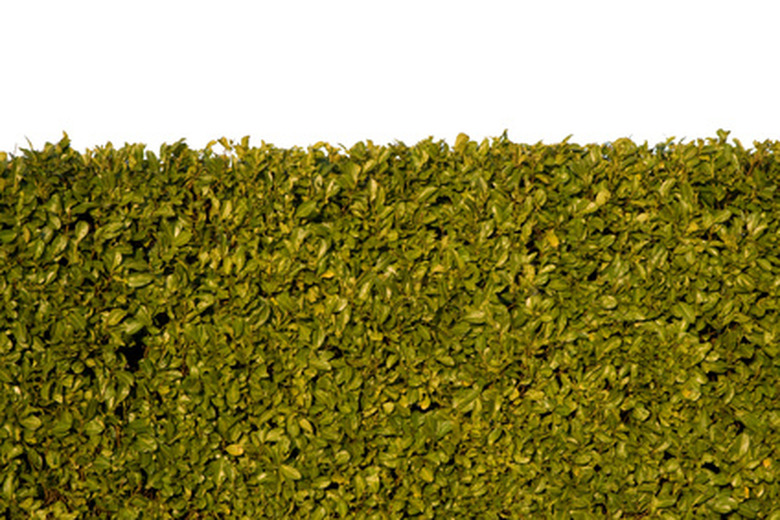The Best Hedge Plants For Zone 3
Privacy in your yard doesn't need to come from a wooden fence, it can also come from a living hedgerow. In USDA hardiness zone 3, where winters are bitterly cold and long, finding plant materials that tolerate wind and cold and survive until spring can be challenging. Learn more about the best hedge plants for zone 3–deciduous shrubs that grow at least 5 feet tall.
Amur Maple
Amur maple (Acer ginnala) is fast growing and tolerates all types of soil. Its foliage becomes brilliant red in autumn. This plant grows 10 to 15 feet in height.
Viburnums
Viburnums are typically rounded shrubs that do not look good when sheared. Choose from arrowood (Viburnum dentatum) that grows 7 to 12 feet tall; American cranberry bush (Viburnum trilobum) also grows to the same height. European cranberry bush (Viburnum opulus) and Sargent's cranberry bush (Viburnum sargentii) reach a maximum height of 8 to 10 feet.
- Privacy in your yard doesn't need to come from a wooden fence, it can also come from a living hedgerow.
- Amur maple (Acer ginnala) is fast growing and tolerates all types of soil.
Barberry
Korean barberry (Berberis koreana) is the most cold hardy of barberry and is a vigorous grower to 6 feet tall. It has fewer spines on its branches than other barberry shrubs.
Boxwood
Although it only grows 2 feet tall, the Korean boxwood (Buxus microphylla var. koreana) is an exceptional choice for low, formal hedges. Plant it in a location void of winter winds.
Burning Bush
The scarlet red fall foliage makes burning bush (Euonymus alata) a popular hedge, reaching heights of 7 to 10 feet. Be aware the many red berries cause seedlings to sprout up in the landscape.
- Korean barberry (Berberis koreana) is the most cold hardy of barberry and is a vigorous grower to 6 feet tall.
Peashrubs
Littleleaf peashrub (Caranga microphylla) grows to 8 feet, the pygmy peashrub (Caranga pygmaea) grows only 5 feet tall and the Siberian peashrub (Caranga arborescens), growing 12 feet tall, is best as a tall windbreak.
Currants
Leaf spot diseases often plague currant shrubs, but they can be informal hedges if occasionally trimmed. Alpine currant (Ribes alpinum) grows only 3 feet tall while clove currant (Ribes odoratum) reaches 5 to 7 feet in height.
Ninebark
The golden ninebark (Physocarpus opuliifolius 'Lutea') grows 7 to 10 feet in height and can have arching, long branches if not trimmed each spring. Its leaves emerge yellow and become more yellow-green in summer.
Lilacs
Lilacs have a large, rounded shape that is best as an informal hedge. Trimming reduces the fragrant flowers that occur in late spring. Chinese or Persian lilac (Syringa x chinensis), common or French lilac (Syringa vulgaris) and the late lilac (Syringa villosa) reach heights of 10 to 15 feet. Smaller choices include the Miss Kim lilac (Syringa velutina 'Miss Kim') and the Meyer's lilac (Syringa meyeri), which reach mature heights of 8 feet and 4 feet, respectively.
- Littleleaf peashrub (Caranga microphylla) grows to 8 feet, the pygmy peashrub (Caranga pygmaea) grows only 5 feet tall and the Siberian peashrub (Caranga arborescens), growing 12 feet tall, is best as a tall windbreak.
- The golden ninebark (Physocarpus opuliifolius 'Lutea') grows 7 to 10 feet in height and can have arching, long branches if not trimmed each spring.
